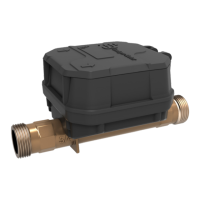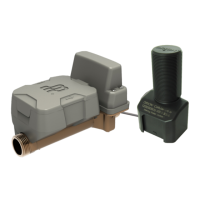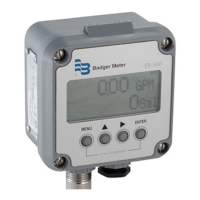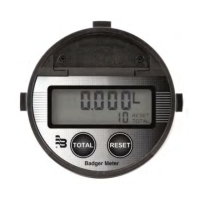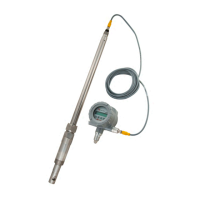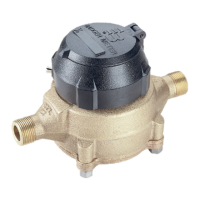ESM-UM-02782-EN-12
METER OPERATING MODES
The meter automatically moves through storage and transition mode into active mode based on water flow:
• Storage Mode
E-Series Ultrasonic meters are delivered in storage mode so that a meter alarm is not triggered. In storage mode, the meter
LCD displays an empty pipe icon on the consumption screen, an empty pipe code on the alarm screen (but no alarm
code is sent to the endpoint) and – – – F (or – – – C) on the temperature screen.
• Transition Mode
When the meter senses water in the pipe, it moves into transition mode. In transition mode, the meter displays water
consumption and, if connected to an endpoint, sends a reading to the endpoint. After sensing a full pipe for 24 hours, the
meter transitions to active mode.
OTE: N If a meter senses an empty pipe in transition mode, the meter goes back into storage mode until water triggers
the process to start again.
• Active Mode
Meter is operating normally. If the meter is in active mode and detects an empty pipe, water temperature displays
ErrF (or ErrC).
For more information, see "Temperature Screen*" and "Alarm and Operating Mode Screen" on page 10.
SAFETY INFORMATION
The installation of the E-Series Ultrasonic meter must comply with all applicable federal, state and local rules, regulations and
codes. Failure to read and follow these instructions can lead to misapplication or misuse of the meter, resulting in personal
injury and damage to equipment.
PRODUCT UNPACKING AND INSPECTION
To avoid damage in transit, meters are shipped to the customer in special shipping containers. Upon receipt of shipment, be
sure to follow these unpacking and inspection procedures:
If damage to a shipping container is evident upon receipt of a meter, request that a representative of the carrier be present
when the meter is unpacked.
• Carefully open the shipping container, following any instructions that may be marked on the container. Remove all
cushioning material surrounding the meter and carefully lift the meter from the container. Keep the container and all
packing material for possible use in reshipment or storage.
• Visually inspect the meter and applicable accessory devices for any signs of damage such as scratches, loose or broken
parts or other physical damage that may have occurred during shipment.
OTE: N If damage is found, request an inspection by the carrier’s agent within 48 hours of delivery. Then file a claim with the
carrier. A claim for equipment damaged in transit is the responsibility of the customer.
Rigging, Lifting and Moving Large Units
• DO NOT lift or move a meter by the electronics, lid or cables.
• Use a crane rigged with soft straps to lift and move the meters. Place the straps around the meter body, between the
flanges, on each side of the electronics.
• Use the sling-rigged method to lift large meters into a vertical position while they are still crated. Use this method to
position while they are still crated. Use this method to position large meters vertically into pipelines.
• DO NOT lift a meter with a forklift by positioning the meter body on the forks, with the flanges extending beyond the lift.
This could dent the housing or damage the internal components. NEVER place forklift forks, rigging chains, straps,
slings, hooks or other lifting devices inside or through the meter flow tube to hoist the unit. This could damage the
internal components.
Meter Operating Modes
Page 5 December 2021
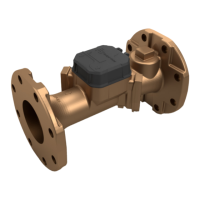
